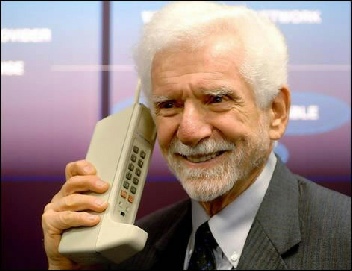

Exploring our past to sort out myth from reality
Share this Page on
Facebook or Twitter

These are the voyages of the TimeShip Anachron.
Our Mission: To boldly explore the past, dispelling
mythinformation and mythconceptions
of American History along the way.
 Visit us on Facebook
Visit us on Facebook
Meet MythAmerica LITE
Phonetic History

Above is an actor in a 1926 silent film, portraying Alexander Graham Bell with a version of his new invention c. 1877. There was no division between headset and microphone... you had to speak into the single port, then put it to your ear to hear the response.
In the early decades of phone use, receivers hadn’t yet become standardized, and lots of special decorative styles were available. This 1885 cast iron phone was called the “Eiffel Tower” for obvious reasons.
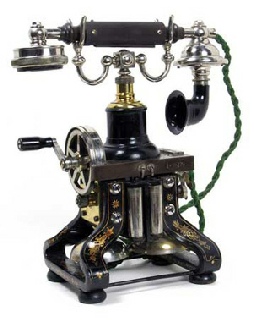
Mark Twain and the Telephone
One of the first private citizens to have a telephone was Mark Twain. He was a consummate early adopter and he loved innovation. Twain was among the first writers to use a typewriter and in fact, he claimed that Tom Sawyer was the first manuscript ever typed on a typewriter. He also boasted that he was the first person in the world to have a telephone in his house in 1877. [Source]
But Twain had a love-
In spite of “early adopters” like Twain, many folks resisted the new-
“While residential telephone service may not directly save money for the household, yet, in an indirect way, it accomplishes the same thing by saving time, labor, and drudgery, and in making the whole household run more smoothly. It is always on duty, shops in all weather, corrects mistakes, and hastens deliveries. It save letter writing, orders the dinner, invites the guests, reserves the tickets, and calls the carriage. It makes appointments, changes the time, cancels them altogether and renews them. It calls the expressman, calls the cab, and instructs the office. It invites one’s friends, asks them to stay away, asks them to hurry and enables them to invite in return ... “ (Source)
“Switchboard girls” became a fixture in large cities and small towns very early, as you can see from these young women from 1893.
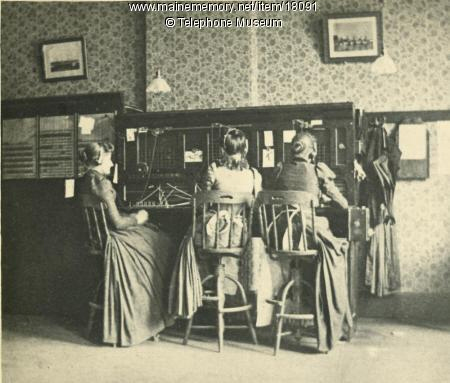
And these below from 1910.
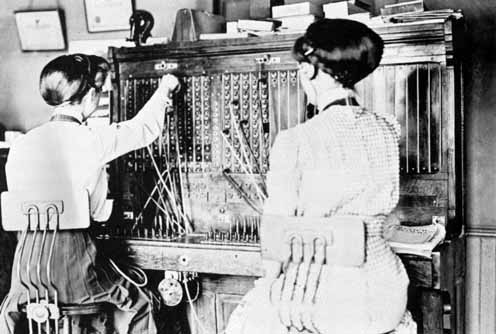
They would have to literally, physically “connect” your phone line to another line in your town with a cord plugged into two holes on their switchboard. But that got irritating very quickly, as you had to wait your turn. Here’s one of the earliest solutions, the “Strowger Automatic Telephone” from 1905.
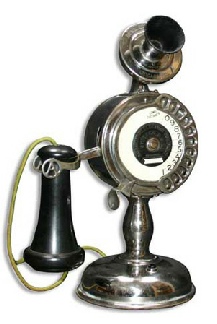
This was the first “dial” telephone. The inventor, Almon Strowger, was an undertaker in Kansas City who got upset because the operators there kept putting business through to his competition. So he developed the first automated telephone switch and dial telephones. Strowger’s company was later bought out by Automatic Electric. (Source)
And if you thought car phones only came along in the 1970s, think again.
In 1910 Lars Magnus Ericsson installed a telephone in his car, although this was not a radio telephone. While travelling across the country, he would stop at a place where telephone lines were accessible and using a pair of long electric wires he could connect to the national telephone network. (Source)
The first “pay phones” came along a lot earlier than I thought, too.
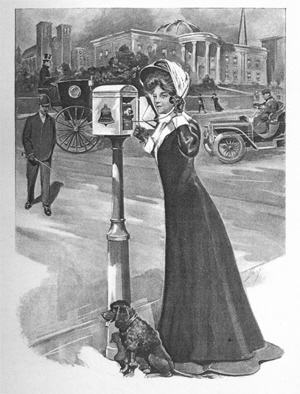
Making a secure and reliable pay phone turned out to be tough to do, and in 1889 William Gray got a patent for an innovative coin payment mechanism he was able to defend for decades. Gray distributed its pay stations through other companies including Western Electric, ultimately selling out to .Automatic Electric
Long distance phoning was widely available by 1915 as you can see from this ad from that year.
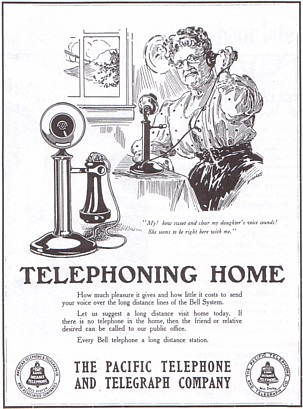
“My! How sweet and clear my daughter’s voice sounds!
She seems to be right here with me.”
The telephone booth has a vague history, but the first well-
Although the Superman character was created in 1933, it took him several years to discover the convenience of phone booths.
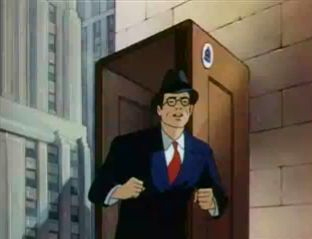
The first time Superman used a telephone booth to change into his costume was in the Superman animated shorts, specifically “The Mechanical Monsters” (1941). This isn’t something that was specifically adapted to comics, so much as became a standard part of the Superman mythos, but the earliest I can find its being reference in comics is Action Comics #345 (January 1967). [Source]
In the Golden Age of comic books Clark Kent didn’t use a phone booth to change into Superman. Actually right throughout every era of Superman comics the phone booth change has rarely been seen.
Yes, Jerry Siegel and Joe Shuster (creators of Superman) used a phone booth for Clark Kent to change into Superman in a Sunday newspaper comic strip in late 1942.
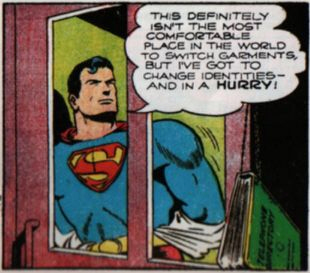
Clark, seeing that there is a job for Superman, excuses himself from Lois by arranging to be called away by a bogus phone call. While inside the phone booth he says to himself, “This definitely isn’t the most comfortable place in the world to switch garments, but I’ve got to change identities -
Bud Collyer, who voiced Superman in the 1940s radio series, would also sometimes state in an episode that he needed to duck into a nearby phonebooth for a quick change from his Clark Kent identity into the colorful garb of Superman.
In “The Adventures of Superman” TV series of the 1950s starring George Reeves, Clark mostly used the Daily Planet Store Room to make his costume change. Some times he used a back alley way... but in all 104 episodes he never used a phone booth. [Source]
Clark will have to go back completely to using storage rooms and such in the near future.
… Arlington’s Last Known Working Phone Booth is History (April 14, 2008)
Superman would not be pleased. One of the last known working phone booths in the Washington region, and one of only a handful left in the United States, is now history. Verizon Communications has dismantled the phone booth at 10th and Irving streets in Arlington County, hauling its remains to a storage facility. All that’s left is the concrete base on which it stood for decades. Officials said late last year that about five calls a day were being made from the booth, and that such a low volume of calls didn’t make sense economically. Phone booths started disappearing in the late 1980s. They’ve been replaced by pedestal-
And of course, most folks don’t even need a pedestal pay phone these days... almost everyone, including young children and even many homeless people, have cell phones. They are so easy to tuck into a pocket or purse for any emergency.
But of course, that was not always so…
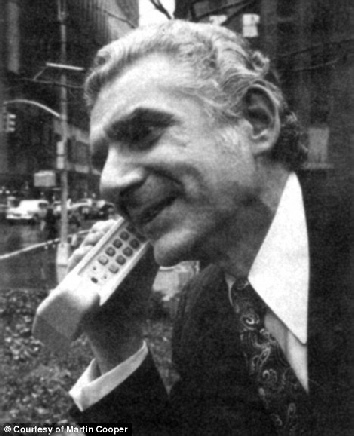
Yes, above is a picture of the actual “first cell phone call” in history under way.
On April 3, 1973, Martin Cooper [inventor of the cell phone in the pic] debuted the first cell phone featuring a fashionable brick-
On the thirtieth anniversary of that epoch-
